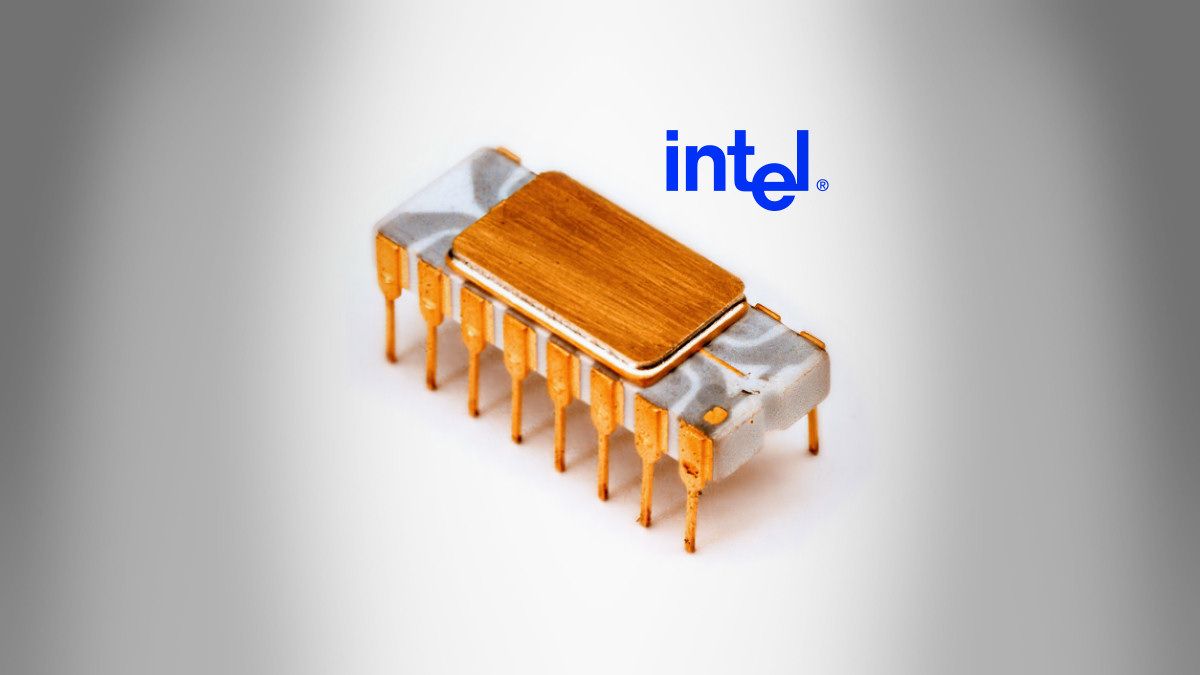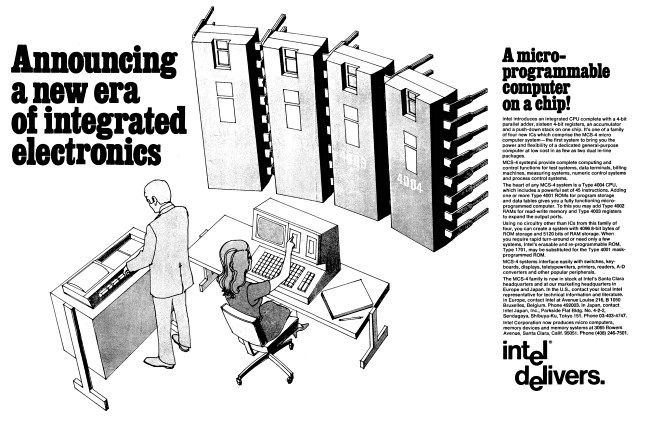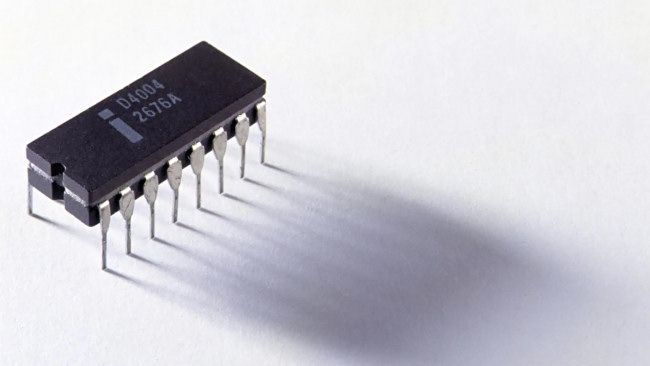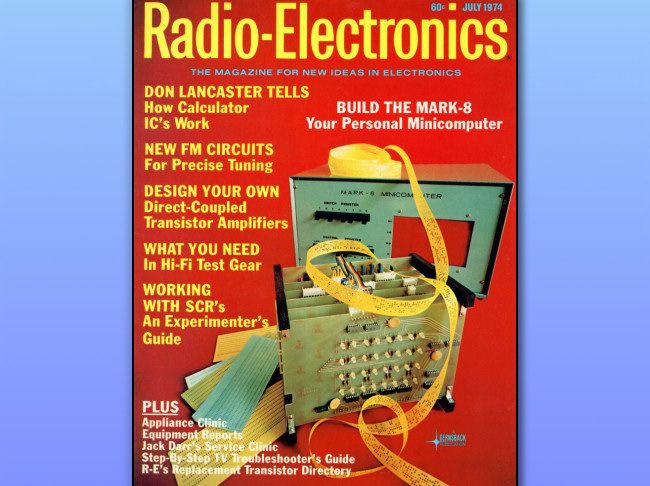Quick Links
On November 15, 1971, Intel publicly debuted the first commercial single-chip microprocessor, the Intel 4004, with an advertisement in Electronic News. Fifty years later, here's a look at its legacy---and how the 4004 stacks up against a modern Intel powerhouse.
The First Commercial Single-Chip Microprocessor
In 1969, a Japanese calculator manufacturer called Busicom hired Intel to create chips for a calculator that Busicom designed. Intel devised a chipset (called the MCS-4---short for "Micro Computer System") composed of four integrated circuits (ICs) that dramatically simplified the calculator's internal design. In delivering its solution, Intel developed and commercialized the world's first single-chip microprocessor, the Intel 4004. It also designed three supporting chips: the 4001, 4002, and 4003. Of these, the 4002 was a RAM chip with a mere 40 bytes of memory.
The Intel 4004 first launched as part of the Busicom 141-PF calculator in mid-1971 (which you can simulate online in your browser). After a contract renegotiation with Busicom, Intel became free to sell the MCS-4 chipset to others. Intel introduced the Intel 4004 to the general market by placing an ad in the November 15, 1971 issue of Electronic News, which was a prominent industry magazine at the time.
The original 4004 advertisement announces "a new era of integrated electronics"---one of the rare times advertising copy wasn't exaggerating. The ad's illustration shows the four MCS-4 chips looming large over a pair of people at a computer, and the text boldy proclaims, "a micro-programmable computer on a chip!"
Prior to the Intel 4004, computer central processing units ("CPUs") were usually one or several circuit boards packed with ICs and discrete electronic components. Thanks to innovations at Intel, all of that circuitry could be compressed down into a single piece of silicon smaller than a fingernail. The radical miniaturization represented by the 4004 made small computers possible and home computers practical over the coming decade.
Was It Really the First Microprocessor?
Some controversy exists over which chip was actually the first microprocessor, so historians generally add qualifying statements such as "single chip" and "commercial" to place a narrow focus on each company's achievement.
At the time of the Intel 4004's commercial debut in mid-1971, a multi-chip microprocessor was already flying in the US Navy's F-14 Tomcat fighter plane, and competitors such as Texas-Instruments were developing their own single-chip microprocessors.
In particular, the Intel 4004 is especially celebrated because it marked the beginning of Intel's long and very successful microprocessor business, which dramatically shaped the evolution of the personal computer and still powers billions of computers today. Had Intel fizzled out as a company in the early 1970s, it's very likely we might celebrate another company's earliest chip as being just as important as the 4004. But, in hindsight, we can look back and see that the 4004 was the beginning of something very big.
Then and Now: The Intel 4004 vs an Intel Core i9-12900K
Microprocessor technology has dramatically changed since 1971, when Intel's 4004 CPU ran at a mere 740 KHz and contained only 2,250 transistors using a 10 micrometer process. To show just how dramatically things have changed, we've compared the 4004 with Intel's latest top-of-the-line desktop CPU, the recently-announced Intel Core i9-12900K. Here's a look at the specs side-by-side:
|
CPU Model |
Intel 4004 (1971)* |
Intel Core i9-12900K (2021)* |
|---|---|---|
|
Date PubliclyAnnounced |
November 15, 1971 |
October 27, 2021* |
|
Price(2021 Dollars) |
$401.41 |
$589.00 |
|
Price(1971 Dollars) |
$60.00* |
$87.82 |
|
Max Clock Speed |
0.00074 GHz(740 kHz) |
5.20 GHz(5,200,000 kHz) |
|
Word Size |
4-bit |
64-bit |
|
Cores |
1 |
16 |
|
Threads |
1 |
24 |
|
Memory Limit |
0.000004 GB(4 KB) |
128 GB(134,217,728 KB) |
|
Power Usage |
1 W |
125-241 W |
|
Process Size |
10,000 nm(10 µm) |
10 nm(0.010 µm) |
|
Die Size |
12 mm² (4 mm × 3 mm) |
215.25 mm² (20.5 mm × 10.5 mm)* |
|
Transistor Count |
2,250 |
~21,700,000,000 |
Of these stats, one that really stands out is the staggering difference in the number of transistors on each chip---2,250 vs an estimated 21.7 billion. (We calculated the Core i9 transistor estimate based on the surface area of the chip multiplied by the transistor density of the Intel 7 process). The huge increase in transistor count is possible due to the dramatically smaller process size involved (7 nm vs 10 µm), which allows for much smaller features on the chip, translating into a huge density of transistors in every square millimeter.
Also, the modern Intel chip packs a lot more than just a CPU onto its die. It includes a high-speed memory controller, a fully-featured GPU, and a lot more integrated into one package. We've definitely come a long way.
Applications of the Intel 4004
Due to its limited capabilities---and quickly getting eclipsed by more powerful chips such as the Intel 8008---the 4004 didn't see widespread use relative to the 8-bit Intel chips that followed. Still, here's a list of some products that incorporated a 4004 CPU. I've pulled many of these examples from a piece about the 4004 I wrote for Technologizer 10 years ago:
- The Busicom 141-PF Desktop Calculator (1971)
- The Intel SIM-4 Development System (1972)
- The Intel Intellec 4 Development System (1973)
- Bally Alley arcade bowling simulator (1974)
- A prototype Bally Flicker pinball machine (1974)
- Wang 1222 word processor (1975)
- A Compuvote computerized voting machine (1976)
The Legacy of the Intel 4004
Only five months after Intel announced the 4004 in Electronic News, the firm shipped the Intel 8008, the first 8-bit microprocessor. The 8008 launched an era of at-home hobby computers like the Mark-8, whose appearance on the cover of Radio-Electronics in 1974 spurred the personal computer industry.
After the 8008, Intel followed up with the 8-bit 8080, the 16-bit 8086, and beyond, with various personal computers adopting each model along the way. This rapid rise in microprocessor power soon left the 4-bit 4004 in the dust, but the chip's cultural impact had already been achieved.
As the first-ever commercial microprocessor, the 4004's legacy is monumental. In the past 50 years, microprocessors have radically affected nearly every industry, reshaped world economies, and transformed civilization. It's hard to overstate the importance of the microprocessor, which might one day be considered as important as man's mastery of fire. Where fire allowed us to change and manipulate physical matter, microprocessors allow us to manipulate information at will.
The miniaturization of technology didn't stop with the invention of the microprocessor. Today, companies continue to integrate features and functions previously available as separate chips onto single-chip packages known as system-on-a-chip (SOCs), such as Apple's M1 series. It's keeping Intel on its toes, and the story isn't over yet. But we all know where the story started---way back in 1971.
Happy birthday, Intel 4004!




